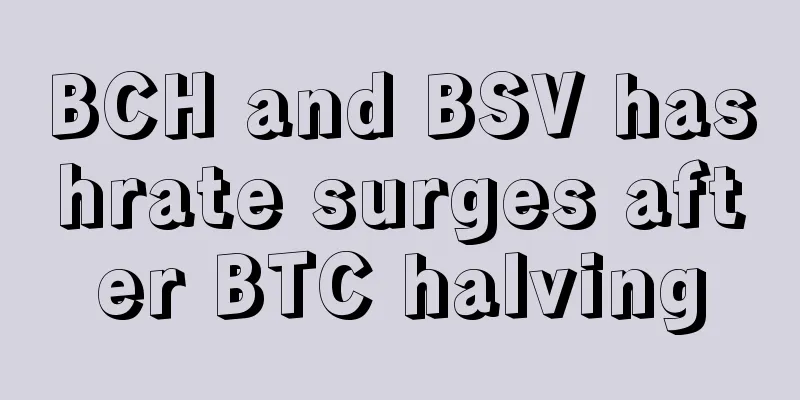Lightning Network protocol developer Russell: Lightning Network without isolated witness is not elegant

|
Translator's note: Rusty Russell is a developer at Blockstream. He is currently responsible for the development of the Lightning Network protocol. He has submitted a series of technical explanations of the initial draft of the Lightning Network paper and has had several exploratory conversations with Joseph Poon on the possibility of how the Lightning Network can be implemented. In this article, Russell explains the advantages and disadvantages of the current version of the Lightning Network protocol. There are multiple teams around the world racing to implement or modify the content of the Lightning Network draft white paper, but in fact many teams are still not very clear about the concept of Lightning Network. Let me try to clarify some concepts: Is the Lightning Network Bitcoin?Yes , you choose a peer node and initiate a Bitcoin transaction to fund the Lightning Network channel. Then you take another transaction to close the channel and release your funds. These transactions are broadcast to the Bitcoin blockchain just like regular Bitcoin transactions. In other words, you and your peer node create a shared account, and then use the Lightning Network to securely negotiate who gets how much Bitcoin from this shared account, without waiting for confirmation from the Bitcoin blockchain. Can I send Lightning Network funds to a normal Bitcoin address?Currently, it is not possible. For the first version of the Lightning Network protocol, if you want to use your channel to send a normal Bitcoin transaction, you must close it, then send the funds, and then reopen the channel (3 transactions). In future versions, you and your peer nodes will allow you to spend funds in the Lightning Network channel, just like a normal Bitcoin payment. What are the limitations of the Lightning Network?Intermediate failure : If an intermediary node fails in the middle of a job, you may have to wait for a while, which could be hours or even days. Peer node failure : If one of your peer nodes becomes unresponsive, you may have to wait several hours before your channel is closed and you can spend your funds. Avoiding cheating peers requires someone to actively monitor the blockchain : any one of your nodes needs to watch your peers to see if they try to spend an invalid transaction, or you can outsource this task to any number of servers (without losing privacy). Offline transactions are not possible : You cannot pay funds to someone who is not online; fundamentally, a Lightning Network payment is a Bitcoin transaction with a confidential value, and the transaction is only trustworthy when the other party is online. This is terrible for large payments : if there is a route but it doesn't have the capacity to transfer the amount you want, then you can't use it. Lightning Network fees are based on a base fee plus a percentage fee; on-chain Bitcoin fees are based on the size of the transaction. The first version of the Lightning Network protocol set the payment limit to Dependency on Bitcoin : If Bitcoin fails, then the Lightning Network fails as well. What are the advantages of the Lightning Network? Enables micropayments : Because fees are paid as a percentage of the payment amount, you can pay for very small transactions. Even transactions of Payments are immediate: typically a transaction is completed in a fraction of a second. Wait, why is the payout capped at 0.0429 BTC? This is to bootstrap the network better. A large number of small payments will exhaust the channels, while large payments can use on-chain Bitcoin transactions. We need to consider network behavior issues while dissuading anyone from taking risks: the Lightning Network will have bugs and flaws, and I think if someone loses funds, I can still compensate them. How private is the Lightning Network?Reasonable. Payments are routed through nodes, and transactions are not revealed to anyone except to the previous node and the next node. But if two routing nodes cooperate, they can figure out that it is the same payment. If someone sees all the packets, they can do traffic analysis to try to figure out where the payment went. An active malicious node along the path can detect whether a payment was accepted by a particular destination. The first and last problem has a known solution, which I hope to explain in a future version of the Lightning Network whitepaper. Can I make money running a Lightning Network node?Not really. Anyone can set up a node, so the fees will be low in the end. In practice, we will probably see the network use a normal fee and not change it much, just to provide an incremental incentive for nodes. What resources are needed to run a Lightning Network node?Currently, a (pruned) Bitcoin full node is required. Using a Bitcoin full node is always the safest and most private option (and more full nodes are a good thing for everyone), of course, light nodes are also possible, but there will be some problems, and some nodes can be removed when further expanding the Lightning Network protocol. Does Lightning Network need SegWit?Yes, but not theoretically . Without SegWit, you could make a inelegant version of Lightning Network, where you have higher risk when setting up channels (if something goes wrong, you might have to wait a month!), have limited channel lifetimes, longer minimum payment expiration times, are less efficient, and are much less outsourceable. SegWit is necessary for the current version of Lightning Network because it solves all of the above problems. Is the routing process an unknown issue?No, early versions of the network are small enough that the routing process is easy. Once the network gets too large, we will have more data to evaluate the best balance between routing, complexity and information leakage, and then refine the proposed scheme. How could the Lightning Network fail?There are many ways that the Lightning Network, which relies on the Bitcoin network, could fail. Even if there are no technical problems, the people who create the protocol are just the implementers: users need to maintain their nodes, and a healthy network ecosystem as a whole is also needed. But if the future is known, life will be boring. |
>>: Financial blockchain in 2016: From a buzzword to a slogan
Recommend
Filecoin has set off a fork trend, and the fork project will be launched as early as September 19
On the afternoon of the 18th, at the World Mining...
Coinkite to shut down user wallet services to focus on enterprise-level Bitcoin hardware development
Bitcoin wallet and technology provider Coinkite h...
Illustration of the fortune telling of Venus Hill in palmistry
The position of the Mount of Venus is below the F...
How to remedy the loss of fortune after ear piercing
Everyone loves beauty, so people will do everythi...
Posting chicken soup pictures on WeChat Moments every day
Speaking of chicken soup for the soul, everyone s...
Do men with peach blossom eyes have super good luck in love?
Few people are born with luck in love. Most peopl...
What kind of man is the most generous?
For men, being generous and magnanimous can attra...
What is the impact of broken root of the mountain on fortune?
The bridge of the nose, which belongs to the pala...
Bitcoin Cash price moves steady as hash rate drops after halving
Author: Liang CHE Source: bitpush.news At 20:19 B...
What is the love fortune of men with peach blossom eyes?
What is the love fortune of men with peach blosso...
AskBitcoiner becomes the largest Bitcoin community in Arabia
Author: Geneva This new Arab Bitcoin community pl...
Simple and crude, teach you how to read palmistry quickly
Fortune-telling and physiognomy can be said to be ...
Forehead face analysis
The forehead is very important in physiognomy, as ...
People whose love lines are chain-shaped are emotionally unstable and easily tempted by other people!
How to read the love line diagram in palmistry? I...
How to read the palm of a man's left hand
Since ancient times, there has been a distinction...









